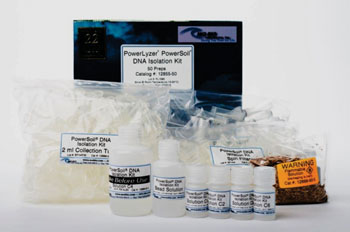Multiplex Quantitative Assays Detect Polyparasitism
By LabMedica International staff writers
Posted on 09 Feb 2016
Accurate quantitative assessment of infection with soil transmitted helminths and protozoa are essential to the interpretation of epidemiologic studies of these parasites, as well as for monitoring large scale treatment efficacy and effectiveness studies.Posted on 09 Feb 2016
As morbidity and transmission of helminth infections are directly related to both the prevalence and intensity of infection, there is particular need for improved techniques, such as polymerase chain reaction (PCR) methodology, for assessment of infection intensity for both purposes.
An international team of scientists led by those at the QIMR Berghofer Medical Research Institute (Herston, Australia) collected fecal samples from a total of 680 people, originating from rural communities: 467 from samples Timor-Leste and 213 samples from Cambodia. DNA was extracted from stool samples and subject to two multiplex real-time PCR reactions, the first targeting both helminths and protozoa. Samples were also subject to sodium nitrate flotation for identification and quantification of soil transmitted helminth (STH) eggs, and zinc sulfate centrifugal flotation for detection of protozoan parasites.
DNA extraction was performed using the Powersoil DNA Isolation Kit (Mo Bio, Carlsbad, CA USA). Extracted DNA was run in two pentaplex real-time PCR reactions. The first was a quantitative assay for Necator americanus, Ancylostoma spp. (A. duodenale, A. ceylanicum), Ascaris spp., Trichuris trichiura; the second was a semi-quantitative assay for Entamoeba histolytica, Cryptosporidium spp., Giardia duodenalis, and Strongyloides stercoralis. The Rotor-Gene 6000 (Qiagen, Melbourne, Australia) was used for all PCR assays, with reactions set up for both PCR reactions.
Higher parasite prevalence was detected by multiplex PCR (hookworms 2.9 times higher, Ascaris 1.2, Giardia 1.6, along with superior polyparasitism detection with this effect magnified as the number of parasites present increased (one: 40.2% vs. 38.1%, two: 30.9% vs. 12.9%, three: 7.6% vs. 0.4%, four: 0.4% vs. 0%). Although, all STH positive samples were low intensity infections by microscopy as defined by official guidelines the DNA-load detected by multiplex PCR suggested higher intensity infections.
The authors concluded that multiplex PCR, in addition to superior sensitivity, enabled more accurate determination of infection intensity for Ascaris, hookworms and Giardia compared to microscopy, especially in samples exhibiting polyparasitism. The superior performance of multiplex PCR to detect polyparasitism and more accurately determine infection intensity suggests that it is a more appropriate technique for use in epidemiologic studies and for monitoring large-scale intervention trials. The study was published on January 28, 2016, in the journal Public Library of Science Neglected Tropical Diseases.
Related Links:
QIMR Berghofer Medical Research Institute
Mo Bio
Qiagen















